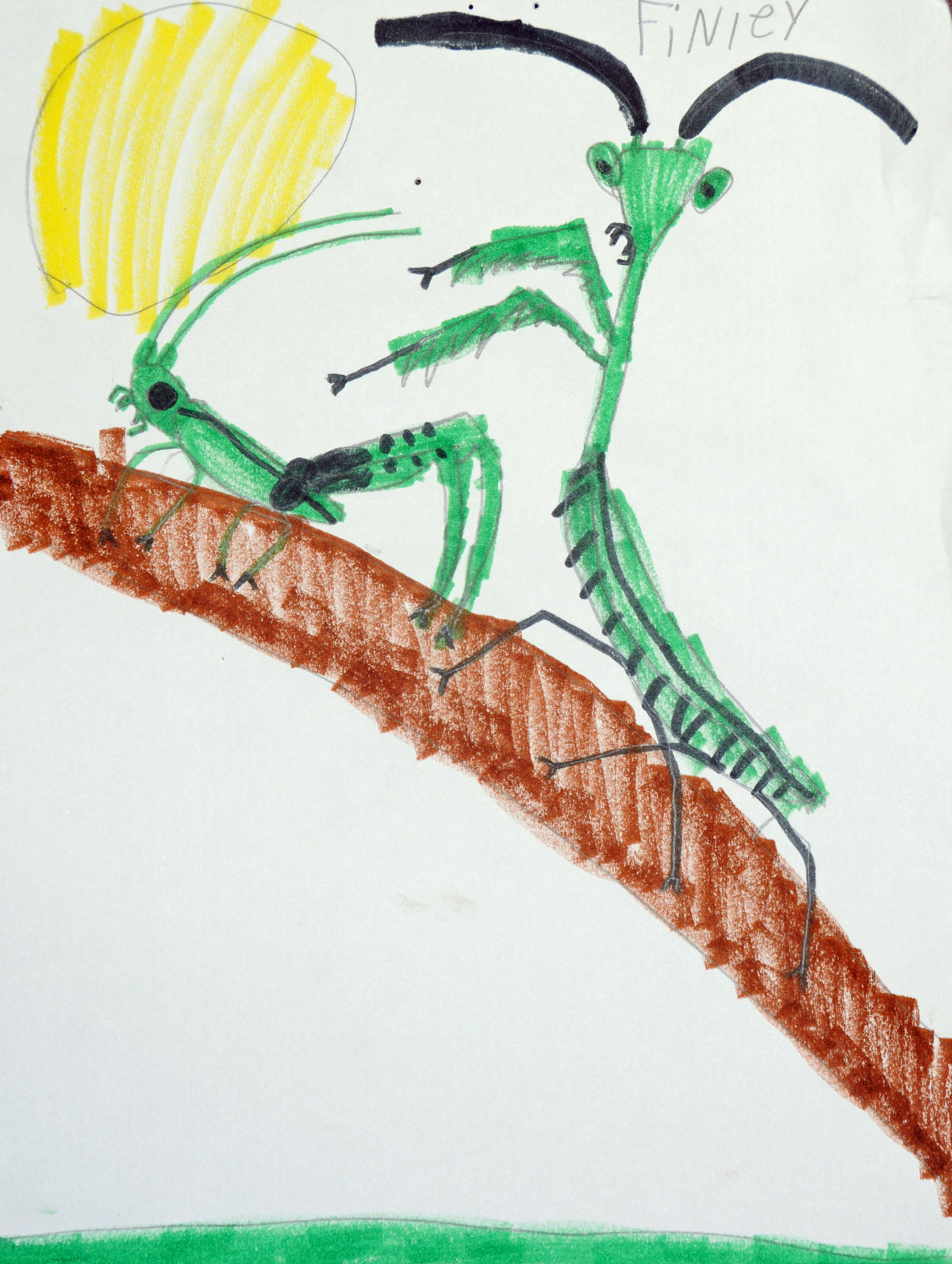Carolina Mantis, Vol. 8, No. 24

Stagmomantis carolina
Order: Mantodea
Family: Mantidae
Thanks to 7-year-old Finley Brown for allowing us to use his illustration of a praying mantis sneaking up on a cricket. Finley is an avid young entomologist, who drops by the entomology building from time to time to check out the insect displays. He likes to draw the insects he finds most fascinating.
Mantids are some of our best known and most loved insects. Their penetrating stare, distinctive posture, and large, raptorial front legs make them easy to identify. Although there are other species of mantids, including some much larger non-native species, Carolina mantids are common throughout the Southeast, and are almost universally thought of as “good” or beneficial insects, even though they are more likely to eat non-pest species, such as bees or butterflies, than pest insects.
Mature females range from 2 to 2 ½ inches long and can be distinguished from males by their large, swollen abdomen. Males are more slender than females and more likely to be seen in flight, especially in late afternoon and near dusk. Both sexes vary in color, ranging from green to grey to brown but they cannot change color once they become adults. Adults are only seen in late summer and fall, as they only have one generation per year, and it takes time for the nymphs to mature. Finley has a partly grown nymph he is keeping as a pet in hopes of seeing it grow to adulthood. What do you think he feeds it?
Female mantids are notorious for eating the males after mating, and this sometimes happens, but males often survive mating. Mantids can be cannibalistic at all ages. Newly hatched nymphs will even eat their siblings. Mantids are generalist predators that feed on a wide range of insects, with nymphs taking progressively larger prey as they grow. Large nymphs and adults can easily tackle large prey, such as bees and butterflies. Their strike is lightning fast and once they lock onto something with those large, spiny forelegs there is little chance of escape. Although they sometimes stalk their prey, or make short lunging grabs, mantids are primarily sit-and-wait predators that use their camouflage to hide them until prey comes within striking distance. Larger nymphs and adults often hunt on or near a flower, waiting patiently for some unsuspecting pollinator.
Another bit of folk lore about praying mantids that is not true is that they can spit in your eye. They cannot, but the twostriped walkingstick, which is sometimes mistaken for a mantid even though it is a plant feeder and does not have raptorial legs, can. They do not really spit, instead they squirt a defensive spray from special glands on their back that can cause much pain, discomfort, and even temporary blindness if it gets in an eye. The range is up to 15 inches or so.
Be careful, Finley, if you find one of these!
Let’s wish Finley success in getting his Carolina mantis nymph to adulthood this fall. He is certainly doing a good job caring for it, and it has already molted a couple of times. After he came by the office to drop off this great picture a few days ago, he was headed out to search for more crickets.
Blake Layton, Extension Entomology Specialist, Mississippi State University Extension Service.
The information given here is for educational purposes only. Always read and follow current label directions. Specific commercial products are mentioned as examples only and reference to specific products or trade names is made with the understanding that no discrimination is intended to other products that may also be suitable and appropriately labeled. Mississippi State University is an equal opportunity institution.
Bug’s Eye View is now on Facebook. Join the Bug's Eye View Facebook group here.


